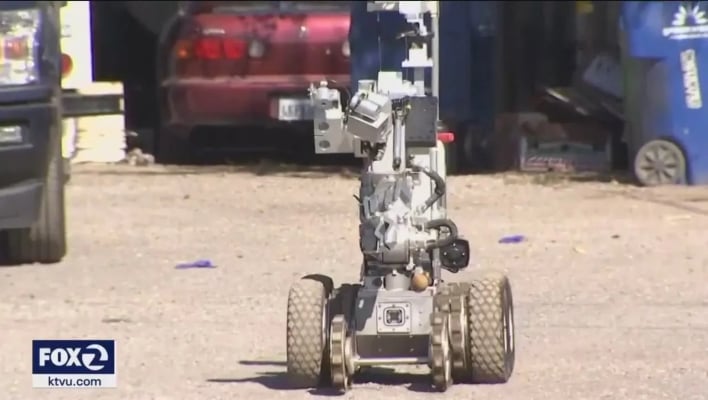San Francisco Approves Police Proposal Granting Robots Deadly Force, What Could Go Wrong?

On Tuesday, the San Francisco Board of Supervisors gave SFPD the green light (with a 8 to 3 vote) to use existing robots as a "deadly force option." Currently, the force has 17 unarmed robots in its arsenal, mainly used for bomb diffusing and reconnaissance. With this new provision, the robots can, in certain situations, be armed with explosives to enter a building with armed and violent suspects barricaded within.
The SFPD stated that, "While an explosive charge may be considered an intermediate force option, it could potentially cause injury or be lethal. Robots equipped in this manner would only be used in extreme circumstances to save or prevent further loss of innocent lives."
This decision mirrors a similar situation in Dallas in 2016 where a police robot armed with explosives was used to kill a man suspected of killing five police officers. It was the first such use of deadly force by a police robot in the US.
Of the 8 votes among the Board of Supervisors, 3 of them (namely Hillary Ronen, Shamann Walton, and Dean Preston) voted against the petition. Shamann Walton, president of the Board of Supervisors argued, "We continuously are being asked to do things in the name of increasing weaponry and opportunities for negative interaction between the police department and people of color. This is just one of those things."
Supervisor Rafael Mandelman, who voted for the policy, emphasized that none of the robots will have firearms attached and there are no plans to do so. In a statement about his support for using robots for specific life-threatening cases, he said, "I think it's totally appropriate. In fact, I think it would be irresponsible not to make plans to use that technology in that horrific eventuality."
Photo credit: KTVU

